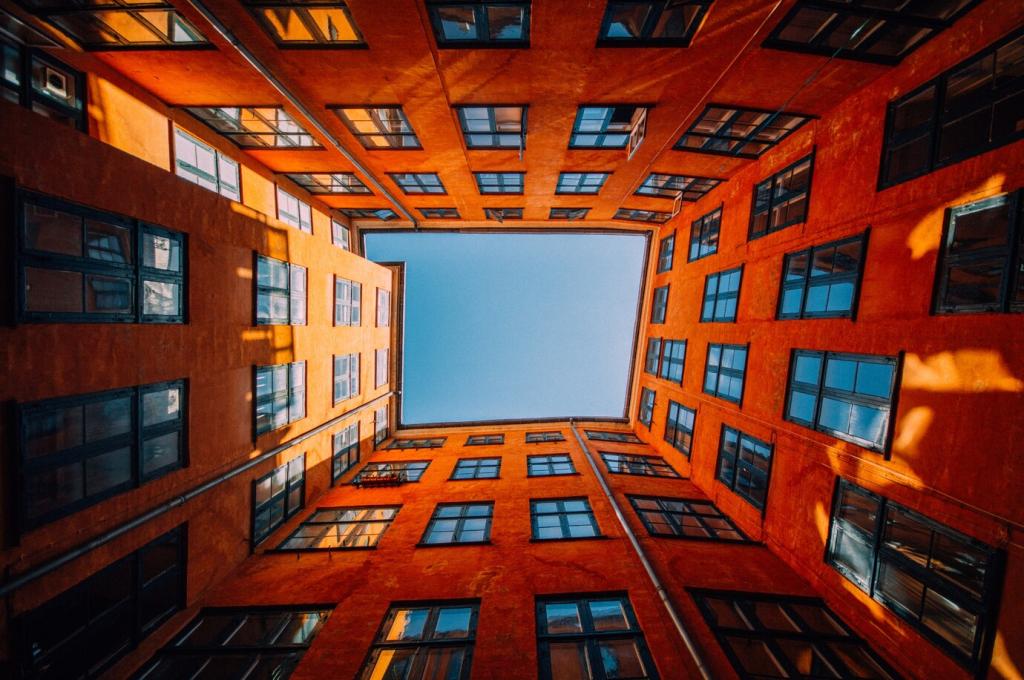Innovative Materials in Sustainable Urban Design
Advanced Concrete Solutions
Self-healing concrete addresses one of the major maintenance challenges in urban environments: the repair of cracks and fissures in critical infrastructure. This material incorporates bacteria or chemical agents that activate when water penetrates a crack, inducing calcite formation and automatically sealing the damage. The result is extended service life for bridges, roads, and buildings, greatly reducing the need for costly repairs and minimizing resource consumption over time. By decreasing both labor and material inputs, self-healing concrete supports the creation of longer-lasting urban structures that ultimately contribute to a more sustainable city.
Recycled aggregate concrete taps into construction and demolition waste as its primary resource, closing material loops and reducing landfill pressures. By replacing natural aggregates with crushed and processed recycled materials, this innovative form of concrete lessens the extraction of new resources, cuts transportation emissions, and supports the principles of circular economy within the urban context. It has been proven to perform comparably to traditional concrete in a variety of load-bearing and non-structural applications, making it a practical, responsible choice for sustainable city building.
Low-carbon binders mark a breakthrough in concrete technology, addressing the carbon intensity of ordinary Portland cement production, which accounts for a significant share of global CO2 emissions. These binders, such as geopolymers and alkali-activated materials, are synthesized from industrial byproducts like fly ash or slag, resulting in much lower embodied carbon. Not only do these alternatives offer rapid strength gain and excellent chemical resistance, but they are also versatile enough for a wide range of urban uses, from paving to high-performance structural components, aligning with the sustainability ambitions of modern city design.

Bio-Based Construction Materials

Mycelium Composites
Mycelium composites are forged through the natural growth of fungal networks on organic waste substrates, creating lightweight, strong, and biodegradable materials suitable for insulation, paneling, and non-structural components. The cultivation process consumes minimal energy, and the finished product naturally decomposes at the end of its lifecycle, ensuring a minimal environmental footprint. Mycelium’s versatility and non-toxicity have sparked its use in pilot projects, where it supports improved indoor air quality while reducing reliance on synthetic, petroleum-based materials common in urban construction.

Bamboo Structural Elements
Bamboo has emerged as a formidable alternative to steel and traditional timber, thanks to its rapid renewability, excellent mechanical properties, and carbon-sequestering capabilities. When used as a structural material, engineered bamboo products exhibit remarkable strength-to-weight ratios, fire resistance, and adaptability to diverse architectural forms. Urban projects worldwide are embracing bamboo in everything from load-bearing frames to innovative facades, creating visually striking spaces that also promote local economies and sustainable forestry.

Hempcrete Insulation
Hempcrete, a composite material made from the woody core of the hemp plant mixed with a lime-based binder, offers superior thermal and acoustic insulation properties. Unlike synthetic insulation solutions, hempcrete is fully biodegradable, resistant to mold, and breathable, balancing urban indoor environments through natural humidity regulation. Its carbon-negative production process absorbs more CO2 than it emits, providing a renewable, low-impact option perfectly tailored to energy-efficient buildings and progressively minded cities.
Previous slide
Next slide

Permeable and Water-Responsive Surfaces
Porous pavements consist of materials that allow rainwater to pass through their surface into underlying layers or detention systems. This permeability reduces runoff rates, mitigates the burden on sewer systems, and filters pollutants at source, delivering both infrastructural and environmental benefits. Applications in sidewalks, parking lots, and plazas positively reshape urban microclimates by promoting cooler ground temperatures and reducing localized flooding incidents.

Modular Green Roof Systems
Modular green roof systems use pre-planted trays or panels that can be quickly installed and maintained atop new or existing structures. These lightweight systems are engineered for durability and mean minimal structural modifications, making them accessible for widespread urban adoption. By providing insulation, capturing rainwater, and promoting pollinator habitats, modular roofs offer multifunctional advantages, building resilience into cityscapes while combating the loss of accessible green space.
Bioactive Living Walls
Bioactive living walls are vertical installations of carefully selected plants grown within engineered substrates and irrigation systems. These living fabrics cool adjacent spaces, filter particulate pollution from the air, and provide aesthetic value. Advanced designs also integrate edible or medicinal plants, creating urban farms that reconnect city residents with local food sources. The versatility of living walls supports their placement in interiors, exteriors, and even as temporary, mobile installations for pop-up events or seasonal displays.
Smart Irrigation Materials
Smart irrigation materials embedded in green roofs and living walls optimize water use by sensing moisture levels and deploying hydration only when necessary. These hydrogels or sensor-driven textiles minimize resource waste and prevent overwatering, which could otherwise lead to nutrient runoff or structural issues. By ensuring that every drop is used efficiently, smart materials make it feasible to maintain thriving, beautiful, and sustainable vegetated systems even in arid or drought-prone cities.
Recycled and Upcycled Urban Furniture
Plastic Lumber Benches
Plastic lumber is manufactured from post-consumer and industrial plastic waste, offering a rot-proof, low-maintenance alternative to traditional wood urban furniture. In bench applications, plastic lumber is precisely molded into ergonomic forms and can be produced in a wide palette of colors and finishes. This material resists weathering, splintering, and vandalism, making it ideal for city parks and plazas. By redirecting plastic from landfills, this application exemplifies both ecological responsibility and long-term utility in urban settings.
Upcycled Metal Lighting
Upcycled metal lighting harnesses discarded metals—like aluminum cans, car parts, and industrial scrap—to create durable, expressive fixtures for public illumination. Artists and designers transform these metals into sculptural forms, imbuing city streets with character while conserving the embedded energy of the original materials. Aside from their aesthetic and environmental merits, these lights can be coupled with LED technology and solar panels to further boost the sustainability profile of urban lighting projects.
Composite Play Structures
Composite play structures mix reclaimed glass, rubber, and plastics to create safe, colorful, and highly durable urban playgrounds. These structures are engineered to meet stringent safety requirements while introducing tactile and visual diversity that stimulates children’s development. Beyond their functional role, composite play installations showcase community collaboration by using materials collected from local recycling efforts, reinforcing the link between environmental action and tangible improvements to public life.
Previous
Next
Integrating Technology and Material Innovation
Sensor-embedded pavements incorporate microchips and wireless nodes within paving materials, enabling the real-time monitoring of maintenance needs, temperature changes, or pedestrian flows. These intelligent surfaces can inform city managers about wear and tear, automatically trigger de-icing systems, or provide localized feedback to adaptive traffic controls. The data collected not only improves operational efficiency and safety but also enhances the user experience, showcasing the power of merging material innovation with IoT technology.
